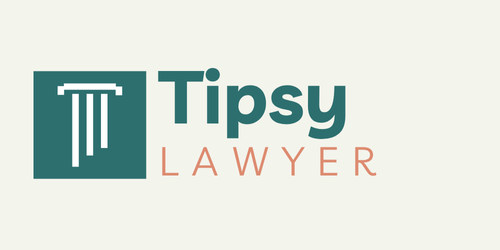A trademark is a distinctive sign, symbol, or expression used to identify and differentiate products or services from one source from those of others. It is a form of intellectual property that plays a crucial role in brand recognition and consumer protection. Trademarks can encompass various elements, including logos, brand names, slogans, and even unique sounds or colors associated with a particular brand.
The primary function of a trademark is to serve as a source identifier, allowing consumers to easily recognize and distinguish between different products or services in the marketplace. By registering a trademark, businesses can protect their unique brand identity and prevent others from using similar marks that might cause confusion among consumers. Trademarks are valuable assets for businesses, representing the reputation and goodwill accumulated over time.
They enable consumers to associate specific qualities, characteristics, and experiences with a particular brand. For instance, the Nike “swoosh” logo is globally recognized and symbolizes the company’s commitment to athletic performance and innovation. Similarly, the Coca-Cola brand name and its distinctive script logo are synonymous with the beverage’s taste and quality.
Establishing a strong trademark helps businesses create a unique identity in the marketplace, differentiate themselves from competitors, and build brand loyalty among consumers. This, in turn, can lead to increased market share, customer retention, and overall business success.
Key Takeaways
- A trademark is a unique symbol, word, or phrase used to identify and distinguish a brand or product from others in the market.
- Protecting your brand through trademark registration is important for preventing others from using similar marks and diluting your brand’s value.
- Registering a trademark involves conducting a thorough search to ensure the mark is not already in use, filing an application with the appropriate government agency, and maintaining the registration.
- Trademark infringement occurs when another party uses a mark that is confusingly similar to a registered trademark, leading to potential legal action and damages.
- Trademark protection offers benefits such as exclusive rights to use the mark, the ability to license or sell the mark, and increased brand recognition and value.
The Importance of Protecting Your Brand
Legal Protection Against Infringement
By registering a trademark, you gain exclusive rights to use the mark in connection with your goods or services, and you can take legal action against anyone who infringes on those rights. This helps safeguard your brand’s reputation and prevents others from capitalizing on the goodwill and recognition that you have built.
Building Consumer Trust and Loyalty
Trademark protection can also serve as a valuable marketing tool. A strong trademark can help build consumer trust and loyalty, as it signifies consistent quality and reliability. When consumers see a familiar trademark, they are more likely to choose that brand over others, leading to increased sales and market share.
Adding Value to Your Business
A registered trademark can add significant value to your business, as it becomes an intangible asset that can be licensed or sold for financial gain. Overall, protecting your brand through trademark registration is essential for maintaining a competitive edge in the marketplace and preserving the integrity of your business.
How to Register a Trademark
The process of registering a trademark involves several steps to ensure that your mark is properly protected. The first step is to conduct a comprehensive search to determine if the mark you want to register is already in use by another party. This search helps identify any potential conflicts with existing trademarks and allows you to make an informed decision about whether to proceed with the registration process.
Once you have confirmed that your mark is available, you can begin the application process with the appropriate government agency, such as the United States Patent and Trademark Office (USPTO). When applying for a trademark, you will need to provide detailed information about the mark, including a description of the goods or services with which it will be used. You will also need to submit a specimen of the mark as it appears in commerce, such as a label, packaging, or website screenshot.
Additionally, you will need to pay a filing fee, which can vary depending on the jurisdiction and the number of classes of goods or services for which you are seeking protection. Once your application is submitted, it will be examined by the trademark office to ensure that it meets all legal requirements. If approved, your trademark will be registered and granted exclusive rights to use the mark in connection with your goods or services.
Understanding Trademark Infringement
| Types of Trademark Infringement | Examples |
|---|---|
| Direct Infringement | Using an identical trademark without permission |
| Indirect Infringement | Contributing to or facilitating trademark infringement |
| Dilution | Using a similar trademark that weakens the original trademark’s distinctiveness |
| Cybersquatting | Registering, trafficking, or using a domain name with the intent to profit from someone else’s trademark |
Trademark infringement occurs when someone uses a mark that is identical or similar to a registered trademark in connection with goods or services that are related to those covered by the registered mark. This can lead to consumer confusion and dilution of the original mark’s distinctiveness, which can harm the reputation and goodwill of the trademark owner. Infringement can take many forms, including using a confusingly similar mark on competing products, using the mark in advertising or promotional materials, or selling counterfeit goods bearing the mark.
Infringement can also occur when someone uses a mark that is likely to cause dilution of the distinctive quality of a famous mark, even if there is no likelihood of confusion among consumers. This type of infringement can occur when a well-known mark is used in a way that blurs its distinctiveness or tarnishes its reputation. For example, using a famous brand name in a way that diminishes its uniqueness or associating it with inferior products can constitute dilution.
It is important for trademark owners to be vigilant in monitoring the marketplace for potential infringement and taking prompt action to protect their rights.
The Benefits of Trademark Protection
Trademark protection offers several benefits for businesses seeking to establish and maintain a strong brand presence in the marketplace. Firstly, it provides legal recourse against anyone who attempts to use similar marks that could cause confusion among consumers. This helps safeguard the reputation and goodwill that a business has built over time and prevents others from capitalizing on its success.
Additionally, trademark protection can serve as a valuable marketing tool, as it helps build consumer trust and loyalty by signifying consistent quality and reliability. Furthermore, a registered trademark can add significant value to a business as an intangible asset that can be licensed or sold for financial gain. This can provide an additional revenue stream and enhance the overall worth of the business.
Moreover, trademark protection can help businesses expand into new markets by establishing a recognizable brand identity that resonates with consumers. Overall, trademark protection offers businesses a competitive edge in the marketplace by preserving their unique identity and preventing others from exploiting their success.
How to Enforce Your Trademark Rights

Enforcing your trademark rights is essential for protecting your brand identity and reputation in the marketplace. If you believe that someone is infringing on your trademark, there are several steps you can take to enforce your rights. The first step is to gather evidence of the infringement, such as examples of unauthorized use of your mark on products or in advertising materials.
This evidence will be crucial in demonstrating that your rights have been violated and supporting any legal action you may take. Once you have gathered evidence of infringement, you can take action against the infringing party through various means, such as sending a cease-and-desist letter demanding that they stop using your mark, initiating legal proceedings to seek damages for infringement, or filing a complaint with the appropriate government agency to have the infringing mark removed from the marketplace. It is important to consult with an experienced intellectual property attorney who can advise you on the best course of action based on your specific circumstances.
Common Mistakes to Avoid When Protecting Your Brand
When it comes to protecting your brand through trademark registration, there are several common mistakes that businesses should avoid. One common mistake is failing to conduct a comprehensive search before applying for a trademark. Without conducting a thorough search, you run the risk of infringing on someone else’s rights or having your application rejected due to conflicts with existing marks.
Another mistake is failing to properly describe the goods or services with which your mark will be used in your application. Providing an accurate and detailed description is crucial for ensuring that your mark is protected in connection with all relevant products or services. Additionally, businesses should avoid using their trademarks as generic terms for their products or services, as this can lead to loss of protection over time.
It is important to consistently use your mark as an adjective followed by a generic term (e.g., “Kleenex tissues” instead of just “Kleenex”) to maintain its distinctiveness and prevent it from becoming generic. Finally, failing to monitor the marketplace for potential infringement can also be a costly mistake. It is important to regularly monitor for unauthorized use of your mark and take prompt action to enforce your rights if infringement is detected.
In conclusion, trademarks play a crucial role in helping businesses establish and maintain a strong brand presence in the marketplace. By registering a trademark, businesses can protect their unique identity and prevent others from using similar marks that could cause confusion among consumers. Trademark protection offers several benefits, including legal recourse against infringement, enhanced marketing opportunities, and added value as an intangible asset.
Enforcing trademark rights is essential for protecting brand identity and reputation, and businesses should be vigilant in monitoring the marketplace for potential infringement. By avoiding common mistakes and taking proactive steps to protect their brands, businesses can ensure long-term success and recognition in the marketplace.
If you’re interested in learning more about trademarks and their importance for businesses, you should check out this article on tipsylawyer.com. It provides valuable information on how trademarks can protect your brand and distinguish your products or services from competitors. Understanding the legal aspects of trademarks is crucial for any business owner, and this article offers helpful insights on the topic.
FAQs
What is a trademark?
A trademark is a recognizable sign, design, or expression which identifies products or services of a particular source from those of others.
What can be trademarked?
Trademarks can be words, names, symbols, logos, slogans, colors, sounds, or even smells that are used to distinguish a company’s goods or services from those of others.
How do you obtain a trademark?
To obtain a trademark, one must file an application with the relevant government authority, such as the United States Patent and Trademark Office (USPTO) in the United States. The application must include a description of the mark and the goods or services it will be used with.
How long does a trademark last?
In most countries, a trademark registration is valid for 10 years, and can be renewed indefinitely as long as the mark is still in use.
What are the benefits of having a trademark?
Having a trademark provides legal protection for your brand, prevents others from using similar marks, and helps consumers identify and distinguish your products or services from those of competitors.
What is the difference between a trademark, copyright, and patent?
A trademark protects brand names and logos used on goods and services, while a copyright protects original works of authorship such as literary, dramatic, musical, and artistic works. A patent protects inventions or discoveries.














